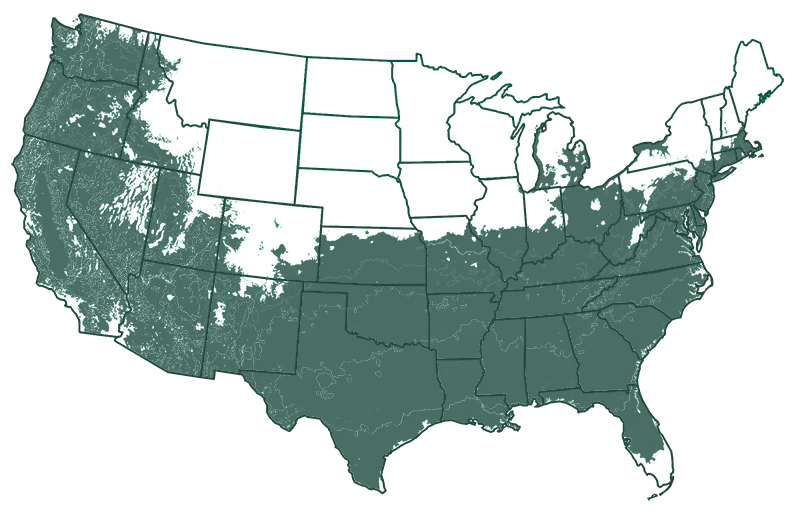
Nellie Stevens Holly
View More Planting Info
For hedging, plant Nellie Stevens Holly 5-6 feet apart. Dig a hole twice the width and as deep as the root ball. You want to plant slightly deeper than how it comes in the container. Wear gloves when handling this tree. Work compost through the removed soil and plant the tree, backfilling with your amended soil and tamping down as you go to prevent air pockets. Water well. Add a layer of mulch, preferably something like pine park or pine needles.
Sunlight:
Nellie Stevens Holly grows in full sun or partial shade and will stay green all year, unlike some other hedging plants that may turn brown in hot, dry weather. They will need at least 4-8 hours daily to develop the red berries.
Soil:
Although they can tolerate many types of soils, this holly prefers loamy, well-draining soil with a slightly acidic pH (5.0 to 6.0). In more alkaline soils, the leaves may yellow, and the growth may be stunted.
Mature size:
This holly grows well in USDA hardiness zones 6-9 and will reach a mature height of 15-25 feet and 6-10 feet wide.
- Product Info
- Care and Maintenance
- Planting Care
- Growing Zone
Product Info
Mature Height: 15-25 ft.
Mature Width: 6-10 ft.
Sunlight: Full-Part Sun
Growth Rate: Moderate
Does Not Ship To: AZ, OR
Care and Maintenance
Watering: Once established, Nellie Stevens Holly is fairly drought resistant, needing only rainfall and supplementary watering in dry conditions. Once planted, water 1-2 times per week until established, then gradually taper back to once weekly. In hot weather, supplemental watering is beneficial. That will get the plant established and ready to survive on rainfall alone.
Fertilizing: Use special acid-loving plant fertilizer for hollies in spring and again in the fall.
Pruning: Regular pruning is unnecessary unless you want to reshape it. For a more rounded shape, cut off the top. Regular pruning will always be essential for a box hedge-type plant. Always prune back to a leaf.
Pests and Diseases: Few pests are of significant concern, but monitor for chlorosis or other root rot symptoms that may be caused by poor drainage. Sucking pests like scale insects may cause cosmetic damage.
Recovery Time: Transitioning from our nursery to your home can be a bit of a shock to your plant. A short acclimation period helps it recover and reduces stress.
Climate Adjustment: Every environment is unique. Giving your plant time to adjust to the local climate, humidity, and light conditions in a shady spot will set it up for better growth and health.
How to Acclimate Your Plant: Keep the plant in its container and place it in a shady, sheltered area away from high winds. Ensure it's watered adequately – the soil should be moist but not waterlogged. Monitor the plant for any signs of distress and allow it to adjust for a few days before planting. After a few days of acclimation, your plant will be better prepared to thrive in its new home for years to come.
Planting Care
Sunlight: Nellie Stevens Holly grows in full sun or partial shade and will stay green all year, unlike some other hedging plants that may turn brown in hot, dry weather. They will need at least 4-8 hours daily to develop the red berries.
Soil: Although they can tolerate many types of soils, this holly prefers loamy, well-draining soil with a slightly acidic pH (5.0 to 6.0). In more alkaline soils, the leaves may yellow, and the growth may be stunted.
Mature size: This holly grows well in USDA hardiness zones 6-9 and will reach a mature height of 15-25 feet and 6-10 feet wide
Growing Zone
Growing Zone 6-9



